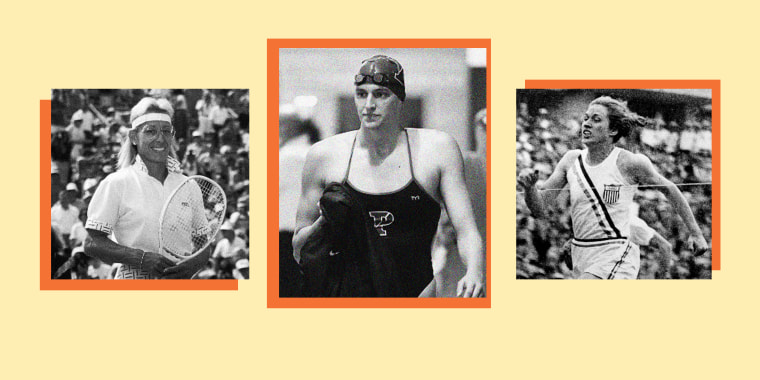In a February 1937 issue of Look magazine, a photo of American Olympic runner Helen Stephens appeared below the caption “What Do You Think? Is This a Man Or a Woman?” The image and the accompanying query were part of a larger feature titled: “When Is a Woman Actually a Woman? Today’s Chief Worry Among Athletic Officials.”
In the aftermath, Stephens — a two-time Olympic champion who never lost a race — lost valuable career and scholarship opportunities, said Sharon Kinney-Hanson, the author of “The Life of Helen Stephens: The Fulton Flash.”
“You think about what feminine standards were in her era: It was the glamor, you had to be gorgeous, you had to be big-chested and curvaceous, and Helen was not interested in that,” Kinney-Hanson said. “She was interested in sports, making a career of it.”
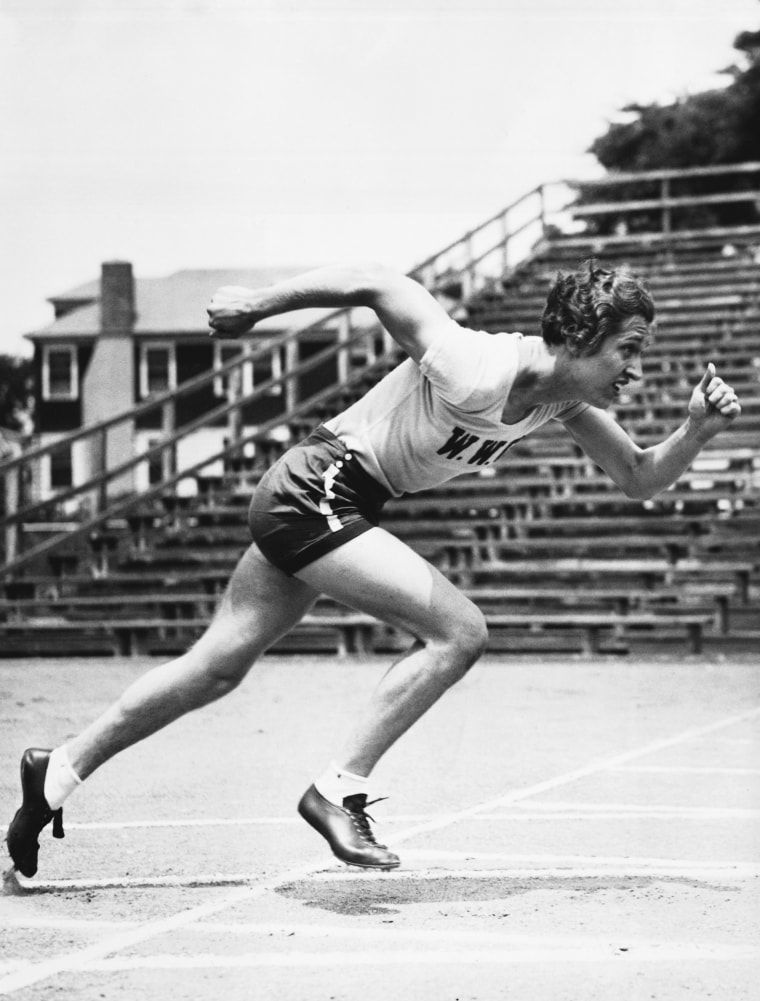
While much has changed for female athletes since Stephens’ day, suspicion surrounding their gender and sexuality — from offensive remarks to sex verification tests — remains. Several historians argue that the heated debate surrounding transgender college swimmer Lia Thomas, whose record-breaking season has thrust her unwillingly into the national spotlight, is a continuation of that century-old legacy.
“Historically, there’s just been a concern that sports would masculinize women or that women might either feminize sports or that you would lose gender distinctions that many people valued,” said Susan Cahn, a history professor at the University of Buffalo and the author of “Coming on Strong: Gender and Sexuality in Women’s Sport.”
She added that trans and intersex athletes — those who are born with reproductive or sexual anatomy that does not fit the typical “male” or “female” categories — further blur boundaries and raise questions about how separate and distinct sex and gender really are.
“The dislike of women who appear masculine or seem to compete in ways that are masculine extends to transgender women and intersex people competing as women,” Cahn said.
Sex verification tests
By the 1940s, sporting authorities began conducting ad hoc sex testing on female athletes whose gender was deemed suspicious, according to Human Rights Watch, which said it typically consisted of physical and visual exams by doctors.
During the Cold War era of the 1960s, Soviet track and field stars Irina and Tamara Press together set at least 22 world records, a feat that triggered slews of “negative commentary” from the media, in which the sisters were “constantly compared to male athletes,” said Lindsay Parks Pieper, an associate professor of sport management at the University of Lynchburg in Virginia and the author of “Sex Testing: Gender Policing in Women’s Sports.”
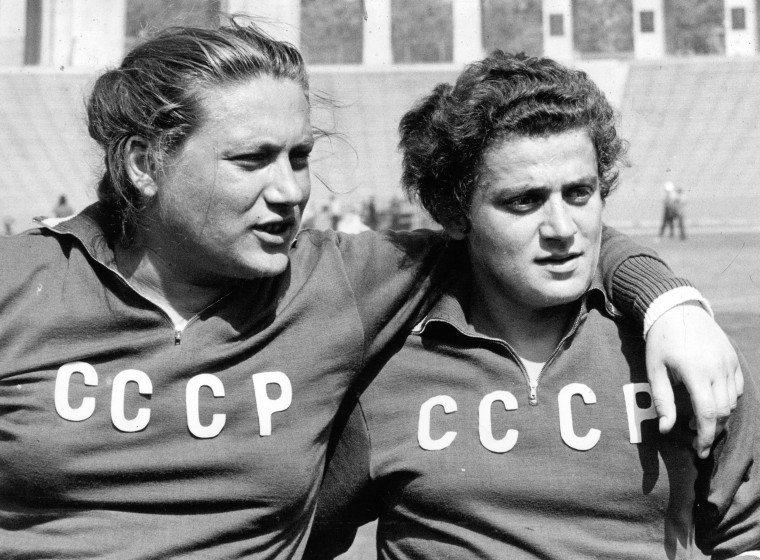
Amid fears that Eastern European teams could be harboring male impostors, sports governing bodies, including the International Association of Athletics Federations (now World Athletics) and the International Olympic Committee started to require chromosomal testing of all female athletes to ensure fair competition, a controversial practice that was eventually banned by the late ’90s.
“They found that it was essentially impossible to use one single cross qualifier to determine an athlete’s sex,” Pieper said, referring to a range of genetic tests used by sporting authorities.
However, sporting authorities still reserve the right to test female athletes suspected of having physical advantages, over concerns that they either could be doping or might be intersex.
By the 2010s, sporting authorities had begun zeroing in on athletes’ testosterone levels, with much of their suspicion falling on high-performing athletes of color from the Global South, Pieper said. South African middle distance runner Caster Semenya and Indian sprinter Dutee Chand, for example, were required to undergo tests over concerns they were too fast.
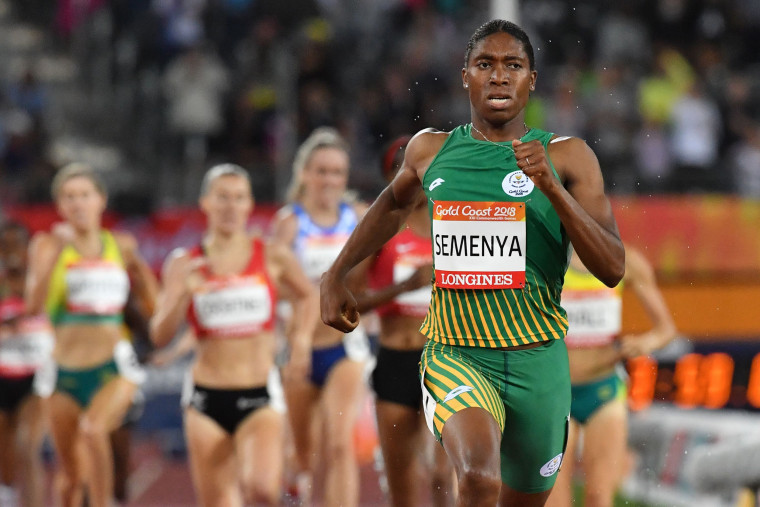
Semenya, in particular, came under a media storm over her muscular build. After Semenya won the 800 meters at the world track and field championships in Berlin in 2009, a Time magazine story reminiscent of Look’s 1937 spread on Helen Stephens featured Semenya’s photo and asked, “Could This Women’s World Champ Be a Man?”
After she was barred from competing in 400-meter-to-1-mile races unless she medically reduced her testosterone, Semenya, who is legally female, took her case to the international Court of Arbitration for Sport in 2019, claiming discrimination. According to court documents reported on by The Associated Press, World Athletics argued that Semenya is “biologically male,” a claim that she said “hurts more than I can put in words.”
After she lost her case, Semenya was unable to compete in the 2020 Tokyo Olympics and is now challenging the ruling in the European Court of Human Rights.
“This fight is not just about me, it’s about taking a stand and fighting for dignity, equality and the human rights of women in sport,” Semenya wrote on Twitter in February 2021. “All we ask is to be able to run free as the strong and fearless women we are!!”
Although normal testosterone levels can vary widely among men (around 300 to 1,000 nanograms per deciliter), only female athletes are subjected to such tests. Pieper said sports in the U.S. have traditionally served as a space for men to cultivate and prove masculinity and that high-performing male athletes have never been viewed as suspicious, regardless of their performances.
“If a woman is good at sports,” she said, people feel a need “to question why that is.”
'Homophobia as a weapon'
Scrutiny surrounding the gender of female athletes has often gone hand in hand with questions about their sexuality.
Mildred “Babe” Didrikson Zaharias, a multisport athlete who won two gold medals in the 1932 Summer Olympics, was subjected to both, Pieper said. Sports journalists, she said, frequently derided Didrikson as a “muscle moll,” a term used to describe women who were considered “sexually deviant” or lesbians.
“Those were accusations lobbed at her as a way, I would argue, to downplay her athleticism or take away from her athleticism, and then you see that continued throughout history,” Pieper said.
By the 1980s, sports journalists had begun fixating on tennis star Martina Navratilova’s muscular physique, often describing her as “bionic,” with some even claiming she should be competing in the men’s tournaments, Cahn said.

After the media outed Navratilova and fellow tennis legend Billie Jean King as gay, a fear of lesbianism began to grip the world of women’s sports. King and Navratilova lost valuable sponsorship opportunities and faced the potential ends of their careers.
Even before they were outed, sporting officials had long tried to squash the stereotype that female athletes were lesbians by, among other things, requiring that they wear ladylike uniforms, according to historians. Aside from fighting stereotypes that they simply could not be good athletes, Cahn said, female athletes were also under “real pressure to prove femininity.”
“I think the fear was that women would claim space in women’s sports and would try to compete and would someday compete as equals or near equals” to men, she said. “And so, homophobia was a weapon just to dismiss women and to denigrate women athletes.”
Worries about lesbianism went beyond athletes, Pieper said.
“Coaches, largely in the ’80s, would accuse other coaches of being lesbian as a negative characteristic to kind of scare athletes to come to their schools, to come onto their team,” she said.
Blurring the 'boundaries of gender'
The first transgender female athlete to be thrown into the national spotlight was Renée Richards, who is believed to be the first trans woman to play a professional sport.
Richards sued the U.S. Tennis Association in 1977 over a requirement that women must undergo genetic testing to compete in the U.S. Open. She won the case but lost a number of matches that year, including matches against Navratilova and Britain’s Virginia Wade.

Nevertheless, Richards ignited fears that trans women would “herald the end of women’s sports as we know it,” said Joanna Harper, a medical physicist and the author of “Sporting Gender: The History, Science, and Stories of Transgender and Intersex Athletes.”
“Renée was the pioneer trans woman. She was the first one,” Harper said. “That will always be the most important thing that she has done.”
Decades after Richards became the first, only a handful of trans athletes have managed to break sports barriers. In 2019, track star CeCé Telfer became the first openly trans person to win an NCAA title. And last year, New Zealand weightlifter Laurel Hubbard became the first out trans woman to compete in the Olympics, where she did not win any medals. Fewer than 30 trans athletes have competed openly in the NCAA, according to the LGBTQ sports publication Out Sports, and few have made headlines.
Among the few is trans swimmer Lia Thomas of the University of Pennsylvania, who broke records at the Ivy League Championships last month and is scheduled to compete in the NCAA Women’s Division I Swimming and Diving Championships, which begin Wednesday in Atlanta. Thomas has attracted intense media scrutiny over her appearance, with conservative news sites, in particular, referring to her as a man, using her former name (also known as “deadnaming”) and featuring photos of her from before her transition.
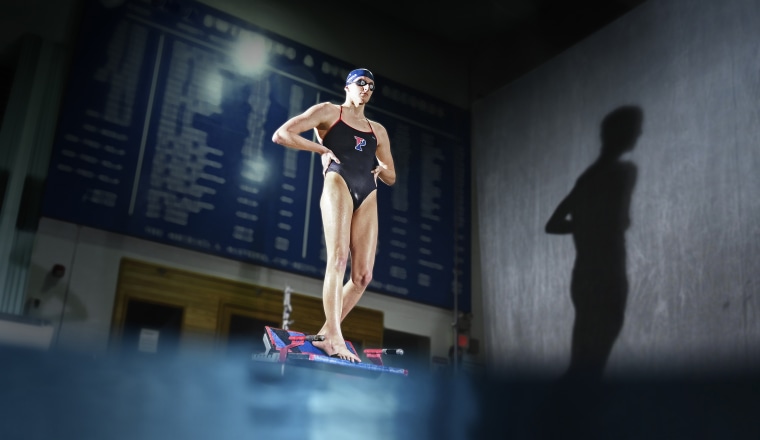
Though headlines frequently portray her as unbeatable, Thomas has had her share of losses, including at a January meet against Yale University and Dartmouth College where she came in sixth in the 100-yard freestyle, losing to four cisgender women and Yale's Iszac Henig, a transgender man who has not yet started testosterone.
“I’m a woman, just like anybody else on the team,” Thomas, 22, told Sports Illustrated this month in response to the criticism. “I’ve always viewed myself as just a swimmer. It’s what I’ve done for so long; it’s what I love.”
In what was seen largely as a victory for trans athletes, the International Olympic Committee announced a new framework in November that scrapped requirements for “medically unnecessary” procedures and treatment that placed limits on testosterone levels, although it left requirements up to individual sports governing bodies. Last month, amid growing negative media commentary about Thomas, USA Swimming, the sport’s national governing body, switched its policy to require elite trans female athletes to suppress their testosterone for three years, up from the previous one year, a change many of Thomas’ supporters suspected was an attempt to prevent her from competing in the NCAA Championships. The NCAA has not adopted the change, meaning Thomas, who began transitioning in May 2019, will be allowed to compete.
Harper said testosterone-based policies for trans athletes in general do not amount to gender policing. However, she called USA Swimming’s new 36-month policy “problematic,” because a trans woman’s hemoglobin — blood proteins responsible for carrying oxygen to the muscles — drop to similar levels as in cisgender women in under a year of hormone therapy, causing them to lose a significant amount of endurance.
While the science is limited, recent studies have found that trans women tend, on average, to maintain an athletic edge even after a year of hormone therapy, despite losing much of their muscle mass. The subjects of these studies were not elite or professional athletes, but the findings do throw into question how much time, following hormone therapy, trans athletes should have to wait before they compete.
“The question isn’t ‘Do trans women have advantages?’ Because yes, that is so obviously true,” Harper said, adding that it iss normal for athletes to have certain advantages and that any advantages trans women have are not necessarily unfair. “But can trans women and cis women compete against one another in meaningful competition? That’s the important question. That’s the interesting question. And that’s a question that we don’t have a 100 percent firm answer yet.”
'How can you compete if you’re not allowed to win?'
Despite decades of scrutiny, female athletes have seen the world of professional sports change dramatically since Helen Stephens’ infamous Look magazine photo.
For example, this year’s U.S. Olympic team had the most female athletes in the history of the Winter Games, and an increasing number of openly LGBTQ Olympians have participated in the Olympics, with queer women typically far outnumbering their male counterparts. And just last month, the U.S. Women’s National Team won a major legal battle against the U.S. Soccer Federation, reaching a landmark agreement that will ensure equal pay for male and female soccer players.
Despite gains, female athletes still face obstacles, especially when it comes to financing, equal pay and media coverage. And some trans advocates say the focus on this small subset of athletes — which has culminated in 11 states’ passing bills to ban trans women and girls from female sports teams in just the past two years — overshadows those other issues.
Cahn said that while there are legitimate questions to be asked when it comes to trans female athletes and competitive fairness, conservatives are focusing on transgender athletes to “draw the line and defend traditional notions of gender.”
“They’re doing it in the name of fairness for girls, and it’s people who’ve never fought for gender equity or equality or to increase the budget for women’s sports,” she said.
Meanwhile, outrage and speculation over Thomas continue to garner headlines, with many of her critics expecting her to smash records in the NCAA finals this week. Harper said to expect “a huge outcry” if she wins any of her events.
“It’s a truism of trans athletes that we can compete in women’s sports as long as we don’t win,” said Harper, who is trans. “If we win, then it’s problematic. And, of course, how can you compete if you’re not allowed to win?”
